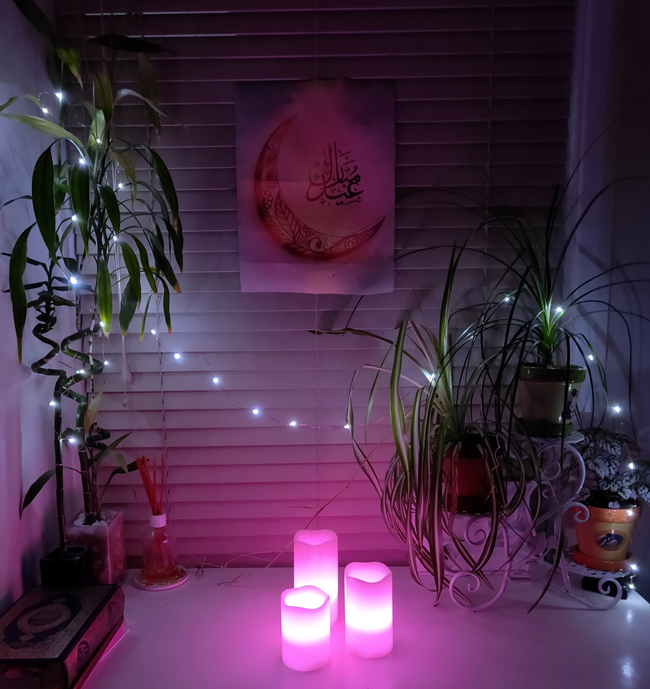‘Farah, oth jao, aaj Eid hai, tayar ho jao’ (wake up Farah, get ready. It’s Eid today), whispered my mum into my ears to see the joy and glow in my eyes. These words still echo in my head and bring smiles and happiness every year on Eid morning. I do this as a legacy with my daughter too, but by singing Eid songs to her.

Eid al-Fitr is always an occasion of great fun and celebration. After a month-long Ramadan, Muslims are excited and look forward to this auspicious and much awaited day of the year. The starting day varies every year and from country to country depending on geographical location. Eid al-Fitr is the celebration that marks the end of the holy month of Ramadan. The month of Ramadan is the one in which all Muslims fast from dawn until sunset. Besides refraining from eating and drinking, Muslims should control their tongue, gaze, and desires. For example, they should avoid arguments, raised voices, anger, foul language, backbiting, and slandering. They should not look at forbidden things. Ramadan is the most significant month of the year for Muslims. At this time, Muslims focus more on their religion by praying, reading, and understanding the Qur’an. Besides self-control, the purpose of fasting is to show empathy towards the misery of the poor and appreciate the necessities of life. Moreover, it is the time of donating money or food to needy.
Like Ramadan, Eid al-Fitr begins with the sighting of the new moon that marks the end of Ramadan. On the last evening of the fasting month, thinking of sighting the moon itself brings a lot of joy, pleasure, and togetherness. Everyone waits for this time of the day anxiously, especially children who are more eager to see the moon. When the night falls, everyone rushes to the roof or in an open area to sight the moon. All the faces are towards the west, and eyes fixed in the sky. Someone raises his hand towards the sky and shouts, ‘there is the moon!’. Other redouble the efforts to search for the moon. Suddenly many people begin to shout. ‘The moon has appeared.’ The Shawwal moon announces the beginning of the Eid celebrations. The next day is the day of Eid al-Fitr. It is the day of prayer and joy. This day also calls for thanking Allah for His blessings, helping the poor and the needy around us, and sharing our love and happiness.
Eid al-Fitr is also known as the “festival of breaking the fast.” After thirty days of fasting, praying for longer times, reciting the Qur’an, and carrying out other religious duties, Muslims worldwide celebrate the completion of the fasting month on the day of Eid al-Fitr. It also serves as a vital reminder for Muslims to be grateful for what they have, and to share with those who may be less fortunate. Special prayer services are held in large halls where Muslims offer Eid prayers by getting together in a congregation early morning to give gratitude to Allah for all His Blessings. After the Eid prayer, people wish each other “Eid Mubarak” (Blessed Eid) or “Eid Sa’eed” (Happy Eid). They spend the day visiting relatives and neighbours and accepting sweets as they move around from house to house. Children, dressed in new clothes, are offered gifts and money to celebrate the joyous occasion. On this auspicious day, all Muslim men, women, and children from different countries and cultural backgrounds wearing their traditional attire come together with hearts filled with love and joy.
Find out more about Eid al-Fitr and Islam
- Children’s books about Ramadan and Eid al-Fitr
- Information about Eid al-Fitr via eResources Discovery Search
- Understanding Islam: a Christchurch City Libraries reading list
- Photos about Islam in Christchurch from our Discovery Wall
- Sali Mahomet (aka “Ice-cream Charlie”) - one of Christchurch’s earliest Muslim residents
Farah
Hornby Library


Add a comment to: Eid Mubarak – wishing you and your loved ones a Blessed Eid